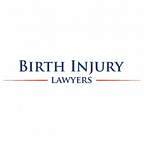Unmasking the Silent Threat: A Deep Dive into Birth Asphyxia Cases
Birth asphyxia is a critical medical condition that occurs when a newborn experiences an inadequate supply of oxygen during the birthing process. This condition can have severe consequences for the infant’s health and overall development. In this article, we will delve deep into the topic of birth asphyxia, exploring its causes, symptoms, diagnosis, treatment options, and long-term effects.
Causes of Birth Asphyxia
Birth asphyxia can be caused by various factors, both before and during the delivery. Some common causes include:
- Placental Problems: Issues with the placenta, such as placental abruption or placenta previa, can obstruct the oxygen flow to the baby.
- Umbilical Cord Complications: Knots in the umbilical cord, cord prolapse, or a tangled cord can restrict oxygen supply to the fetus.
- Maternal Health Conditions: Certain maternal health conditions like preeclampsia, high blood pressure, or gestational diabetes can contribute to birth asphyxia.
Symptoms and Diagnosis
Identifying birth asphyxia promptly is crucial for initiating timely interventions. Here are some common symptoms and diagnostic methods:
- Blue or Pale Skin: Newborns with birth asphyxia may exhibit a bluish or pale complexion due to oxygen deprivation.
- Difficulty Breathing: Rapid or irregular breathing patterns, gasping, or weak cries are signs of respiratory distress in infants.
- Low Heart Rate: A slow heart rate or weak pulse can indicate reduced oxygen levels in the baby’s body.
Diagnosing birth asphyxia typically involves a combination of physical examination, monitoring the baby’s vital signs, and conducting blood tests to assess oxygen levels and acid-base balance.
Treatment and Immediate Interventions
When birth asphyxia is suspected or diagnosed, immediate medical interventions are necessary. Here are some crucial steps taken to address this condition:
- Resuscitation: If the baby is not breathing or has a weak pulse, resuscitation techniques like chest compressions and assisted ventilation are initiated.
- Oxygen Therapy: Providing supplemental oxygen to the newborn can help restore normal oxygen levels in their body.
- Therapeutic Hypothermia: In severe cases, therapeutic hypothermia, a controlled cooling process, may be employed to minimize brain damage.
Long-Term Effects and Prognosis
The long-term effects of birth asphyxia can vary depending on the severity of the condition and the promptness of medical interventions. Some possible consequences include:
- Developmental Delays: Children who experienced birth asphyxia may be at higher risk of developmental delays, including cognitive, motor, and speech impairments.
- Cerebral Palsy: Severe cases of birth asphyxia can lead to cerebral palsy, a group of movement disorders caused by brain damage.
- Learning Disabilities: Difficulties with learning, attention, and academic performance may be observed in children affected by birth asphyxia.
While the prognosis may be challenging for some infants, early intervention programs, therapy, and supportive care can significantly improve outcomes and quality of life for those affected.
Prevention and Preemptive Measures
Prevention is crucial in mitigating the risk of birth asphyxia. Some preventive measures include:
- Prenatal Care: Regular prenatal check-ups help monitor the mother’s and baby’s health, enabling early detection of any potential risks.
- Proper Monitoring: Continuous monitoring of the baby’s heart rate, oxygen levels, and movements during labor can help identify signs of distress promptly.
- Cesarean Section: In cases where vaginal delivery poses risks to the baby’s well-being, a cesarean section may be recommended.
Support for Families and Caregivers
Birth asphyxia can be emotionally and physically challenging for families and caregivers. It is essential to provide adequate support, including:
- Counseling and Education: Offering emotional support and education to families about the condition, its potential effects, and available resources can help them navigate the challenges ahead.
- Early Intervention Programs: Early intervention services, such as physical therapy, occupational therapy, and speech therapy, can aid in the child’s development and maximize their potential.
- Legal Assistance: Families may be eligible for compensation in a birth asphyxia case. A birth injury lawyer can review the details of the case and explain all legal options.
Ongoing Research and Advancements
Medical researchers and professionals continue to explore new advancements in the field of birth asphyxia to improve diagnosis, treatment, and long-term outcomes. Some areas of ongoing research include:
Neuroprotective Strategies
Scientists are investigating various neuroprotective interventions aimed at reducing brain damage in infants with birth asphyxia. These strategies involve pharmacological agents, stem cell therapy, and innovative techniques like hypothermia and xenon gas therapy.
Biomarkers and Predictive Tools
Researchers are working on identifying reliable biomarkers that can aid in early detection and prediction of birth asphyxia. These biomarkers could assist healthcare providers in implementing preventive measures or initiating interventions at the earliest stages.
Telemedicine and Remote Monitoring
With the advancements in telemedicine technology, remote monitoring of at-risk pregnancies and real-time consultation with specialists are becoming more accessible. This can help ensure timely interventions and improve outcomes, especially in areas with limited access to specialized healthcare.
Raising Awareness and Advocacy
Raising awareness about birth asphyxia is crucial for early recognition, prompt treatment, and supportive care. Some initiatives aimed at increasing awareness include:
Public Health Campaigns
Governments, healthcare organizations, and advocacy groups collaborate to launch public health campaigns, emphasizing the importance of prenatal care, early detection, and immediate medical attention for birth asphyxia.
Healthcare Provider Training
Continuing education programs for healthcare providers, including obstetricians, midwives, and nurses, help ensure that they are well-informed about the latest guidelines and best practices in managing birth asphyxia.
Parent and Community Education
Providing educational resources and workshops for parents, caregivers, and community members can empower them with knowledge about birth asphyxia, its signs, and the importance of seeking timely medical help.
Birth asphyxia poses a significant threat to newborns, potentially leading to severe short-term and long-term consequences. By raising awareness, providing support to families, and promoting collaboration among healthcare providers, we can work towards minimizing the impact of birth asphyxia and ensuring the best possible start in life for every newborn.
